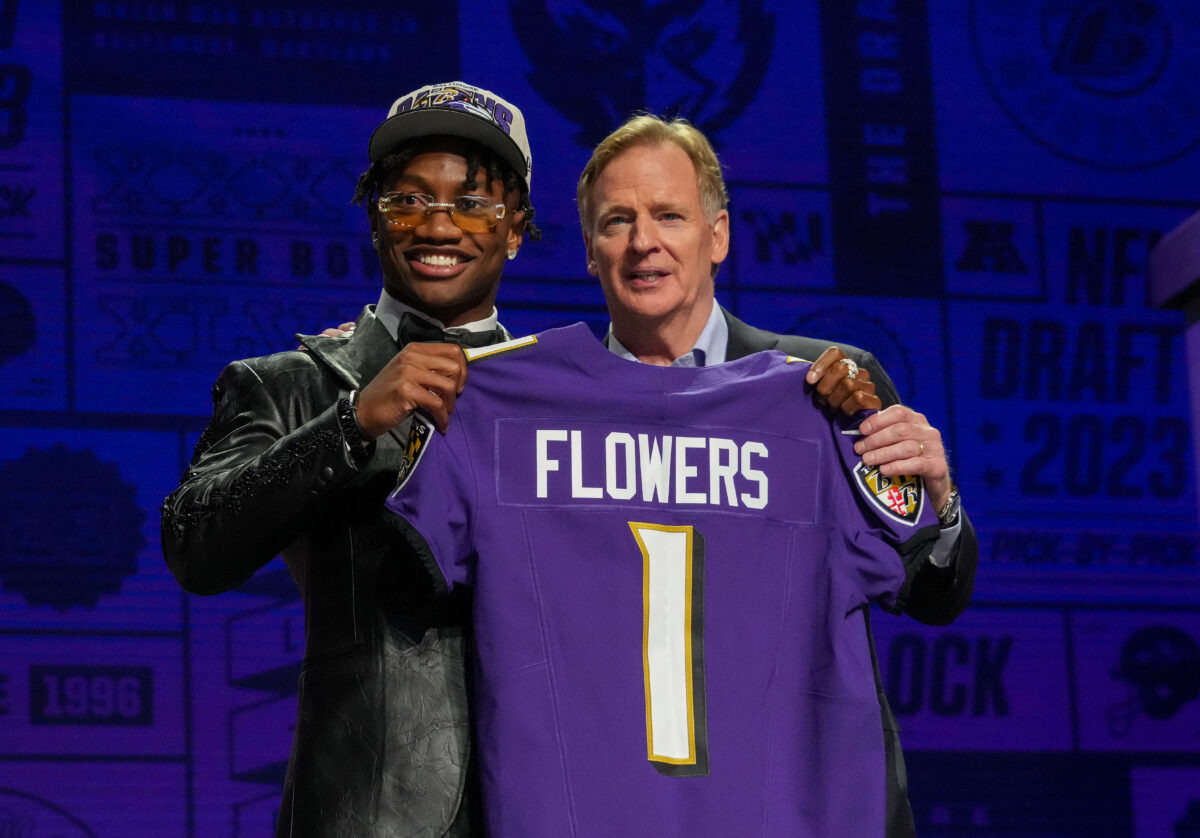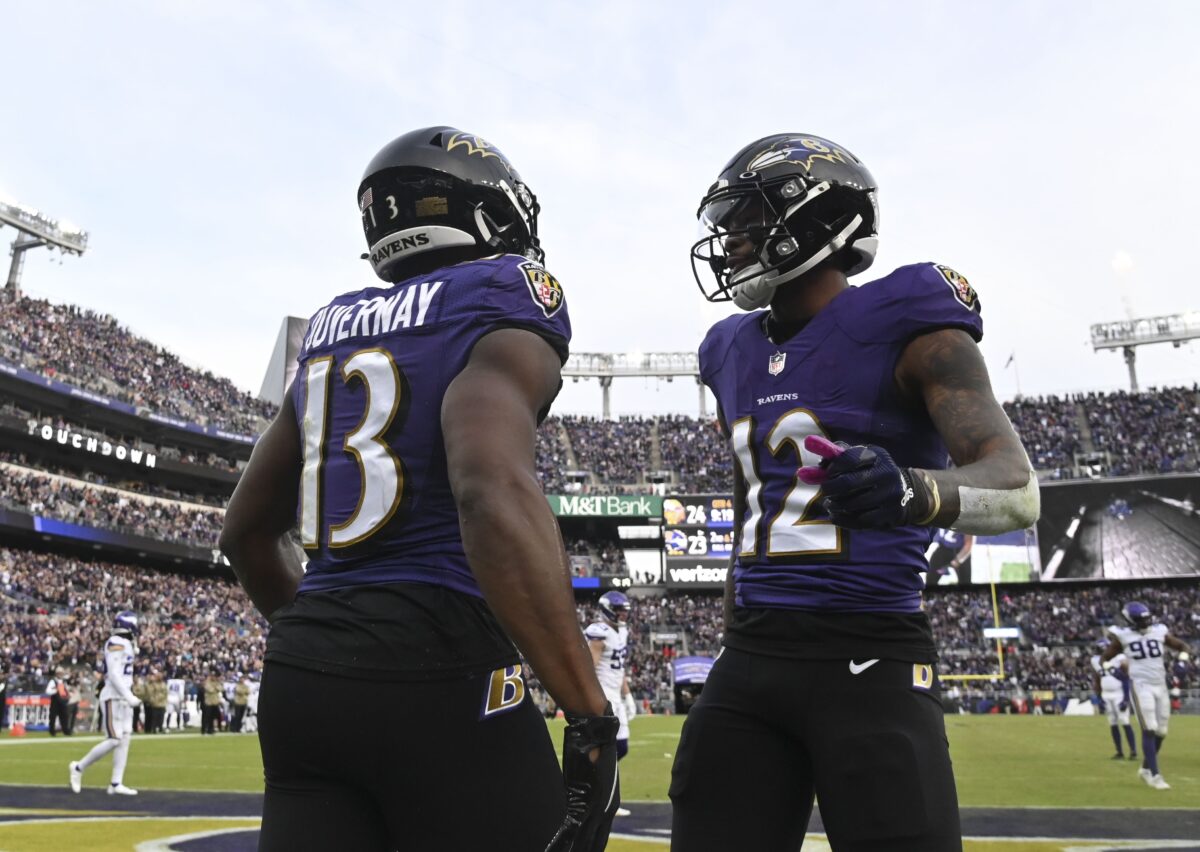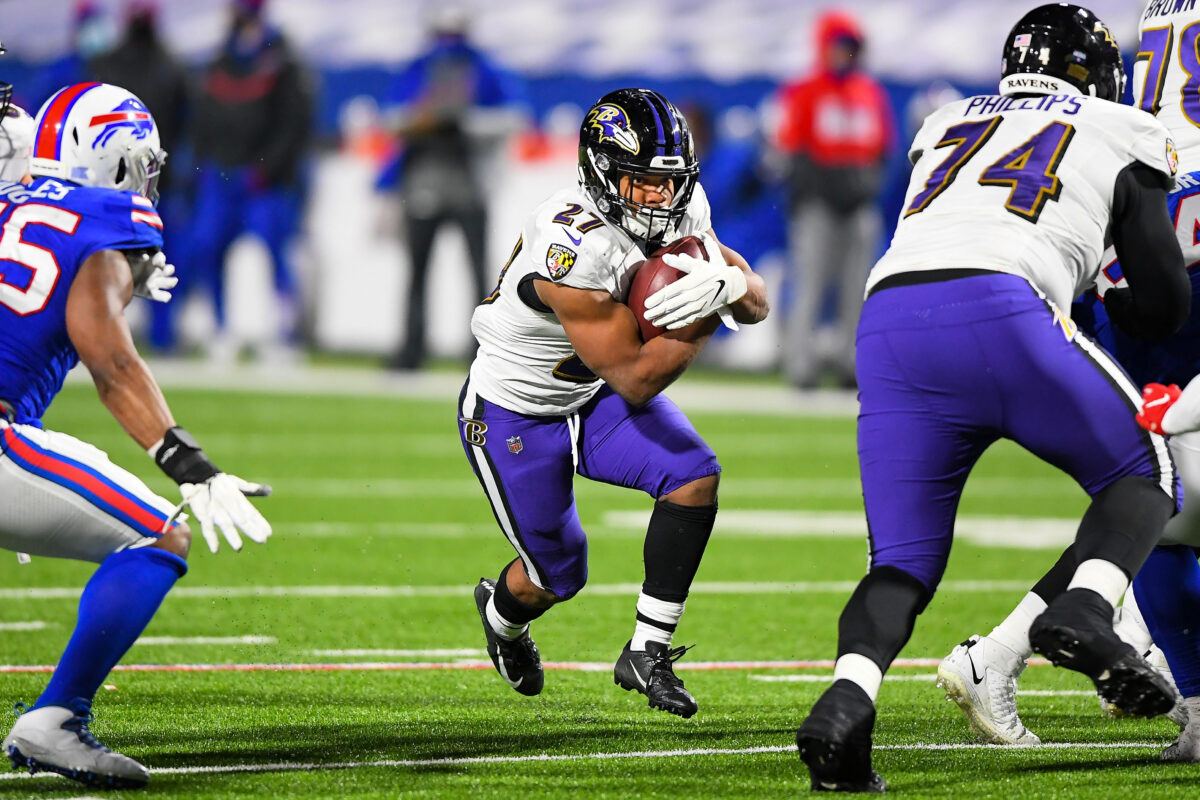Expectations of fantasy-relevant Ravens for 2021.
After averaging an NFL-best 33.2 points per game in 2019, along with 407.6 yards, the Baltimore Ravens saw those numbers slip to 29.3 points (seventh) and 363.1 yards (19th).
In response to that regression, the Ravens added free-agent wideout Sammy Watkins (37-421-2 w/ KC) and first-round receiver Rashod Bateman, which they hope will elevate dual-threat Lamar Jackson as a passer. Still, there are a lot of unknowns entering the 2021 fantasy football season, so let’s look at Baltimore’s offense.
Lamar Jackson fantasy football outlook
From a purely statistical standpoint, Jackson’s second full year as a starter wasn’t that different from his first. In 2019, he averaged 208.5 yards passing, 80.4 yards rushing and 2.9 combined TDs per game. Last year, Jackson posted 183.8 yards passing, 67 yards rushing and 2.2 combined scores per contest. Those shortfalls add up over a full season, though, and it was the difference between elite fantasy production and fringe QB1 status.
What are you waiting for?!? It’s time to get into The Huddle! Sign up today.
Expect a bit of a bounce back from Jackson this year as Baltimore’s investments in the passing game (four high-round picks in three years) and offensive line (signing Kevin Zeitler and Alejandro Villanueva) should help diversify their attack. Don’t expect much of a philosophical shift, however, as what makes the Ravens dangerous is the threat of Jackson making things happen with his legs.
Could we see a little more throwing and a little less running? Sure, but at age 24 there’s little reason to rein in Jackson, who has never missed a game due to injury. Even with two documented cases of COVID-19, one of which cost him a game in 2020, Jackson is draftable as a midrange QB1.
J.K. Dobbins fantasy football outlook
One of the great mysteries of last season was why it took roughly two months to give Dobbins steady work — he averaged 4.2 carries per game in his first six and 12.1 over his final nine. The Ohio State product showed great burst, averaging 6.0 yards per carry as a rookie and scoring in each of his final half-dozen games. While he continued to share snaps with Gus Edwards, Dobbins’ numbers over that stretch project out to 1,403 yards and 20 TDs over a 17-game campaign.
Those numbers are still based off modest usage, and if Dobbins can carve out a larger slice they could improve quickly. It’s a dubious proposition to rely on the Ravens to change up a model that has led the NFL in rushing the past two years, so Dobbins is best drafted as a lower-end RB2, but there’s top-10 upside.
Gus Edwards fantasy football outlook
Edwards has quietly carved out three solid seasons as part of Baltimore’s running back committee, averaging 717 yards and 3.3 rushing scores on a 5.2 YPC clip. He’s been a nonfactor as a receiver, though, with just 18 career receptions, which figures to limit his usage to running situations.
While the departure of Mark Ingram leaves 72 carries to be redistributed, the smart money suggests most of those will go to Dobbins. Consider Edwards a decent fourth/fifth fantasy RB and possible handcuff.
Sammy Watkins fantasy football outlook
After seven NFL campaigns, Watkins’ status as talented but oft-injured is well earned. The former fourth overall pick missed a combined 23 games over the last five seasons, which is a big reason Watkins has topped 1,000 yards just once as a pro.
[lawrence-related id=459818]
His yards-per-catch have declined each of those five seasons, though some of that can be chalked up to his role in a Chiefs offense that featured the NFL’s top field stretcher in Tyreek Hill. Still, the bloom is off the rose. Between the injuries and middling production, Watkins isn’t worth more than final-round flier consideration.
Marquise Brown fantasy football outlook
Brown returns as the nominal WR1 in Baltimore after leading the team in catches (58), yards (769) and TDs (8) last year. The diminutive wideout has shown he can get deep — only nine WRs had more receptions of 40-plus yards last year — but the consistency has yet to develop with Brown topping 100 yards in a game just twice. The question is whether adding talent around him will create more opportunities by opening things up or fewer looks in the NFL’s least-active passing attack; Baltimore threw 406 passes last season, 79 fewer than Tennessee, which ranked 30th.
To date, Hollywood has been more straight-to-DVD than summer blockbuster, but he’s arguably the only Ravens receiver worth drafting, albeit no more than a WR4.
Rashod Bateman fantasy football outlook
When Baltimore used the 27th pick in the ’21 draft on Bateman there were thoughts that he could be an immediate starter given his advanced route running and toughness after the catch. Unfortunately, Bateman went down early in camp and ended up undergoing core-muscle surgery that could keep him sidelined into October or later.
Even if there are no hiccups in his recovery, he might have trouble carving out a significant role as a rookie. He’s purely dynasty-league material.
Mark Andrews fantasy football outlook
Andrews led the Ravens with a 64-852-10 line in 2019 and was just slightly off Brown’s pace last season when he posted a 58-701-7 mark. His size has been a boon down in the red zone, and he has generally operated as Jackson’s go-to receiver.
Even with an influx of new and developing options there’s no reason to think that Andrews won’t continue to be a volume target. He deserves serious consideration once Travis Kelce and Darren Waller are off the board.



